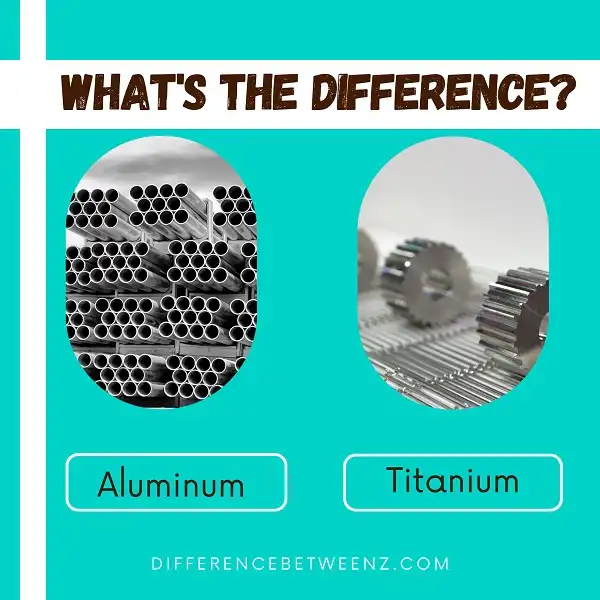There are many different types of metals that are used in a variety of industries. Two of the most popular metals are aluminum and titanium. Both have unique properties that make them suitable for different applications. Here is a comparison of the two metals to help you decide which is best for your needs.
What is Aluminum?
Aluminum is a silvery-white, soft, nonmagnetic metal. Aluminum is the third most abundant element in the Earth’s crust after oxygen and silicon. Aluminum is extracted from bauxite, which is a clay-like mineral that is found in many tropical and subtropical countries, including Australia, Brazil, Jamaica, and Suriname. Aluminum has a number of properties that make it an ideal material for use in a variety of applications.
It is lightweight yet strong, and it is highly resistant to corrosion. Aluminum is also an excellent conductor of heat and electricity. These properties have led to its widespread use in the construction of aircraft, automobiles, and satellites as well as in the packaging of food and beverages.
What is Titanium?
Titanium is a chemical element with the symbol Ti and atomic number 22. It is a lustrous transition metal with a silver color, low density, and high strength. Titanium is resistant to corrosion in seawater, aqua regia, and chlorine. Titanium was discovered in Cornwall, Great Britain, by William Gregor in 1791 and was named by Martin Heinrich Klaproth after the Titans of Greek mythology. The element occurs within a number of mineral species, the most important of which are ilmenite and rutile.
Titanium can be alloyed with iron, aluminum, vanadium, and molybdenum, among other elements, to produce strong yet lightweight alloys for aerospace (jet engines, missiles, and spacecraft), military (armored vehicles and naval ships), industrial processes (chemicals and petrochemicals, desalination plants), medical prostheses (hip replacements), sports equipment (golf clubs and bicycles), jewelry, mobile phones(smartphones), and other applications. Titanium makes up about 60% of the total global production of pig iron: one of its principal uses.
Difference between Aluminum and Titanium
Aluminum and Titanium are both metals that have a variety of uses. Aluminum is the most abundant metal in the world and is used in a wide range of products, from aluminum foil to aircraft parts. Titanium is a strong, lightweight metal that is often used in aerospace and medical applications. Both metals have unique properties that make them suited for different applications.
Aluminum is a good conductor of heat and electricity, making it ideal for electrical applications. It is also highly corrosion-resistant, making it a good choice for outdoor products. Titanium is much stronger than aluminum but is also more expensive. It is often used in applications where strength and durability are critical, such as in aircraft parts. Both Aluminum and Titanium have their own advantages and disadvantages, making them each suitable for different purposes.
Conclusion
So, what is the difference between aluminum and titanium? Titanium is denser than aluminum, so it has a higher melting point. It also doesn’t corrode in salt water the way aluminum does. However, titanium is more expensive to produce and harder to the machine. Aluminum is less dense than titanium but cheaper to produce and easier to the machine.
In terms of strength, both metals are comparable. Which metal you choose for your project depends on your needs and budget. If you need a strong, corrosion-resistant metal that can withstand high temperatures, then titanium is the better choice.


